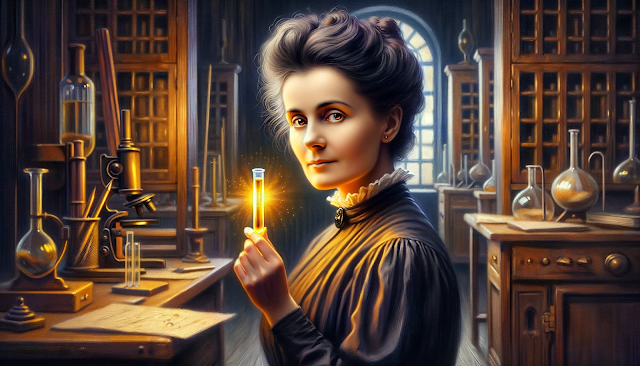Marie Curie-Skłodowska, a pioneering scientist famous for her groundbreaking work on radioactivity, lived a life immersed in her research. Her discovery of radium and polonium, two highly radioactive elements, earned her two Nobel Prizes. However, this remarkable journey came with a price.
Throughout her career, the harmful effects of radiation were not well understood. Marie Curie frequently handled radioactive materials, often carrying test tubes of radium in her pockets or storing them in her desk drawer. Safety measures were virtually non-existent, as the glowing substances were a source of fascination more than fear.
Over the years, Curie's prolonged exposure to high levels of radiation took a toll on her health. She developed a condition known as aplastic anemia, believed to have been caused by this exposure. This condition hindered her body's ability to produce blood cells, leading to her eventual death in 1934.
When Marie Curie passed away, the world mourned the loss of a scientific hero. But her legacy was so intimately entwined with radioactivity that it left a unique challenge: her remains were still dangerously radioactive. Her body itself had absorbed a significant amount of radiation during her decades of work.
To ensure the safety of those who would visit her final resting place, her coffin was lined with a thick layer of lead. Lead, being a dense material, is an excellent shield against radiation. It was necessary to contain the harmful rays still emanating from her body, even in death.
Marie Curie's lead-lined coffin serves as a stark reminder of the sacrifices she made for science. It's a symbol of her dedication and the unseen dangers she faced in her quest to unlock the secrets of the atom. Her resting place in the Panthéon in Paris is not just a tomb but a testament to the courage and persistence of a woman who forever changed the world of science, at great personal cost.
Over the years, Curie's prolonged exposure to high levels of radiation took a toll on her health. She developed a condition known as aplastic anemia, believed to have been caused by this exposure. This condition hindered her body's ability to produce blood cells, leading to her eventual death in 1934.
When Marie Curie passed away, the world mourned the loss of a scientific hero. But her legacy was so intimately entwined with radioactivity that it left a unique challenge: her remains were still dangerously radioactive. Her body itself had absorbed a significant amount of radiation during her decades of work.
To ensure the safety of those who would visit her final resting place, her coffin was lined with a thick layer of lead. Lead, being a dense material, is an excellent shield against radiation. It was necessary to contain the harmful rays still emanating from her body, even in death.
Marie Curie's lead-lined coffin serves as a stark reminder of the sacrifices she made for science. It's a symbol of her dedication and the unseen dangers she faced in her quest to unlock the secrets of the atom. Her resting place in the Panthéon in Paris is not just a tomb but a testament to the courage and persistence of a woman who forever changed the world of science, at great personal cost.


"her remains were still dangerously radioactive. Her body itself had absorbed a significant amount of radiation during her decades of work".
ReplyDeleteThe radioactivity of Maria's body is caused by the contamination of radionuclides with which she worked, not due to radiation which she obtained. The typical ionizing radiation cannot induce further radioactivity. Only neutron radiation can do this, but it is rather rare.